Home » Kneader Mixer|Σ Blade & Z Blade
Kneader Mixer|Σ Blade & Z Blade
Kneader
Details of Kneader
- The machine comprises a motor, cover press, main body, mixing chamber and rotor mechanism, gearbox, air control system, tilting machine, heating/cooling system, rubber belt transmission and base, etc.
- The kneader can be made into vacuum, pressure, atmospheric, Normal temperature, high temperature, low temperature, etc.
- The temperature adjustment method of a kneader can be the jacket, halfpipe, far-infrared tile, steam, hot water, heat transfer oil, electric heating, cooling water, chilled water, and other methods.
Application: Paint, Adhesive, Battery, Pharmaceutical industry, Cosmetic
The hydraulic system is controlled by a hydraulic station to control the large cylinder to complete the opening and closing functions. The hydraulic system is controlled by a hydraulic station to control the cylinder to complete functions such as turning the cylinder and opening the cover. Detailed parameters can be selected and required by the user. Convenient and reliable. The transmission system consists of a motor, a reducer, and a gear, and the motor is matched according to the model of the kneader.
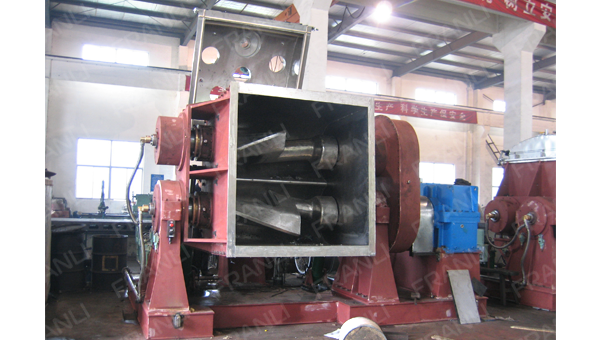
The characteristics of the kneaded material in the kneader
The characteristics of the material ground by the kneader are mainly in terms of adhesion, particle size, density, shape, fluidity, surface roughness, moisture content, and agglomeration tendency:
1. When kneading particles of uniform size, those with high density will tend to the bottom of the kneader.
2. When the densities are similar, the bottom of the directional device is small and approximately spherical in shape.
3. The greater the viscosity, the higher the temperature, and the easier it is to agglomerate or agglomerate, and it is not easy to be uniformly dispersed.
The discharge method of the kneader
1. Lower discharge ball valve
2. Hydraulic turning cylinder discharge
3. Screw extrusion and discharge
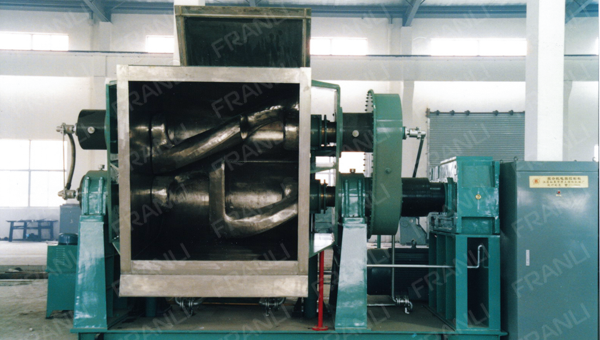
The inner surface roughness of the kneader
1. Fine polishing
2. Rough polishing
3. Mirror polishing
The charging amount of the material in the kneader
1. Too little, the productivity is lower, generally 30%–50% is appropriate.
2. Too much, and there will be little space for kneading.
The speed of the stirring paddle of the kneader
Different specifications of kneaders have different stirring paddle speeds, so their kneading effect and work efficiency are also different.
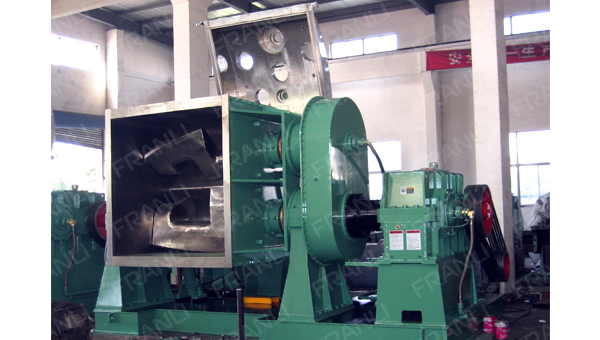
Kneader maintenance and maintenance
1. Each lubricating part needs to be filled with oil frequently, and the oil should be added by dripping oil not less than twice per shift. Press-in oiling lubrication should be pressed into butter once every 20 days, and the oil pool needs to be replaced every three months.
2. When using steam for heating, a safety valve and a pressure gauge should be installed at the inlet pipe, and the steam pressure should not exceed the requirements of the mixing cylinder operating pressure according to the knowledge of the sign. The use of reversal should be reduced during the mixing and kneading work.
3. All lubricating parts should be filled with oil frequently. The tightness of the belt should be appropriate, and it should be checked, adjusted, or replaced regularly. The steam pipeline is not allowed to leak, the valve should be closed when the machine is out of use, and the reliability of the safety valve pressure gauge should be ensured.
4. There should be no leakage of raw materials in the sealing part of the wall panel. The shaft seal of the wall panel needs to be properly adjusted or replaced according to the wear and tear of use. Regularly check the steam pipes and joints, and no leakage is allowed. The machine should be overhauled after 6 months of operation, and the vulnerable parts should be checked and properly repaired or replaced.
In addition to the above maintenance methods, a series of inspections are also required when the laboratory kneader is installed and turned on. First clean, decontaminate and wipe off the anti-rust grease. Check each lubrication point and inject lubricating oil (grease). Check the tension of the V-belt before driving, and move the motor to the proper position by adjusting the bolt. Check for loose fasteners, leaks in steam pipes, and the safety of electrical circuits and electrical equipment. The electric heating type kneader must have a grounding device, etc.
Welcome to send inquiry to us and let’s make a win win business together !
Guidelines For Kneader
The dispersion kneader is suited for rubber and plastic mastication, as well as the blending of different rubber and plastic components. Small and medium-sized rubber and plastics manufacturers with a wide range of product types and colours, as well as food, dyes, pharmaceuticals, and ceramics, can benefit from the internal mixer.
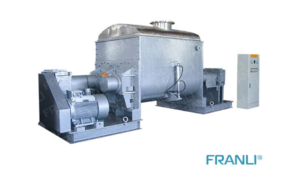
Sigma Kneader: The Solution for Mixing and Kneading
Sigma kneader is a versatile machine that can be used for mixing, kneading, and homogenizing a wide range of materials, including high-viscosity products.
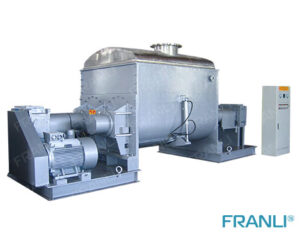
Sigma Mixer: Indispensable Equipment For Manufacturing
Sigma Mixer is a type of mixer that uses a unique mixing principle to achieve an efficient blending of materials. The mixer consists of two blades that rotate in opposite directions, creating a kneading and folding action that ensures thorough mixing. The blades are shaped like the Greek letter Sigma, hence the name Sigma Mixer.

Sigma Blade Mixer: The Mixing Solution
The Sigma Blade Mixer is a robust and reliable mixing machine that uses a unique mixing principle to achieve superior results. It is a type of double-arm kneading mixer that features two blades that rotate in opposite directions.

Vacuum Kneader: A Machine for Your Mixing Needs
The Vacuum Kneader is a type of mixer that utilizes a vacuum chamber to create a homogeneous mix of ingredients. It is designed to knead, mix, and disperse high-viscosity materials under vacuum conditions, resulting in a superior product.

Efficiency and Effectiveness of Dispersion Kneader
The dispersion kneader has complete control over the mixing and blending of the raw materials to create an even mix that allows for better distribution. This device contains a mixing chamber with rotating blades made of high-quality steel.

Vacuum kneader: high efficiency and environmental protection
A vacuum kneader is mainly used for stirring, mixing, and kneading high-viscosity and elastic-plastic materials. The most common fields include high-viscosity sealant, silicone rubber, neutral acid glass glue, chewing gum, bubble gum, aluminum silver paste, silica gel, paper pulp, cellulose, and other materials. It covers food, agrochemical, pharmaceutical, cosmetics, electronic paste, and other industries, and has been sought after by the industry.

